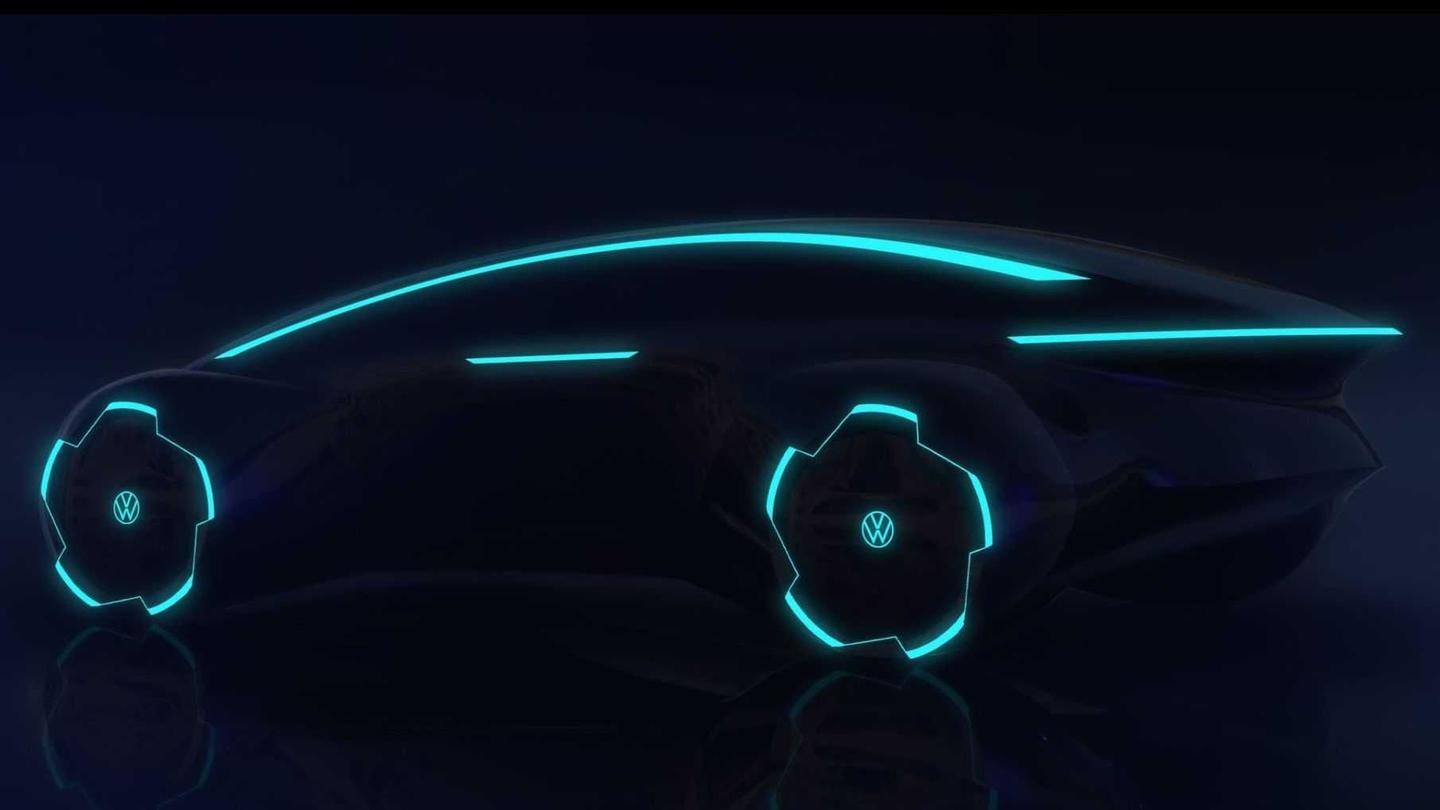
Volkswagen's Project Trinity EV teased in new image: Details here
What's the story
Volkswagen Chairperson Herbert Diess has revealed a teaser image of the Project Trinity - the company's self-driving electric car set to debut in 2026.
The picture, possibly of a concept render, showcases a vehicle with a sloping roofline, a pointed rear section, and sporty wheels. Some parts of the model, including the top, rear, and wheels are illuminated by blue lights.
Prowess
Project Trinity will support Level 4 autonomous driving
The Project Trinity EV will feature a new design language for the company, with a particular focus on the interiors.
The four-wheeler will be capable of Level 4 autonomous driving. This implies that the technology will be able to take full control but will still come with a steering wheel and pedals so that a human can take over.
Capability
The EV will support ultra-fast charging
After the ID models, Project Trinity will mark the next generation of Volkswagen EVs. The new architecture has several important goals, including the production of a complete vehicle in just 10 hours.
The first model based on this tech should cost around €35,000 (approximately Rs. 29.8 lakh) and it would be able to recharge "as fast as refueling" a standard car.
Plans
What are the other goals of the project?
Volkswagen is transforming the vehicle into a software-based product so that it can lay the foundation for new, data-based business models.
Barriers to individual mobility will be diminished and more attractive usage packages will be offered at the same time.
Extra revenue will be generated from automated driving and software-based operations, which customers will be able to book as per their need.
Details
The company has also revealed an autonomous semi truck
Meanwhile, Diess has also released a render of an autonomous semi truck, sporting a logo of Volkswagen's MAN truck brand.
Instead of having a cabin for the driver, the front section rises as high as a normal big rig to direct the air over the cargo.
However, specifications about the vehicle are scarce and whether it would be brought to production is unclear.